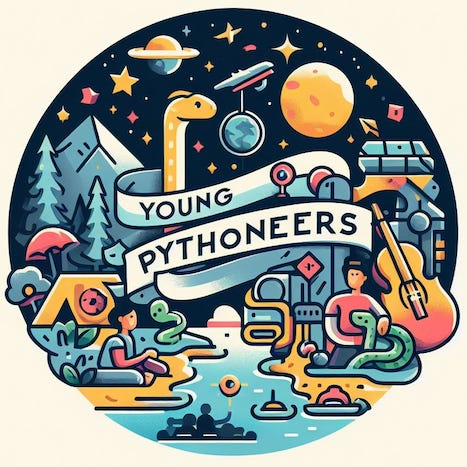Young Pythoneers: Level Up! Code That Talks and Listens
Issue 2: Get Ready to Chat with Your Computer! 🗣️💬
Last time, we dipped our toes into the Python pool and discovered the magic of the print() function. Now, we're diving deeper to become master communicators with our computers! This time, we'll combine the power of input()and print() to create interactive experiences.
Input: Your Computer's Ears 👂
Remember the input() function? It's like giving your computer ears – it waits patiently for you to type something in. Let's see how we can use it in a more interesting way!
favorite_animal = input("What's your favorite animal? ")
print("Whoa! " + favorite_animal + "s are super cool!")
Breakdown:
The
input()function asks the user for their favorite animal and stores that answer in thefavorite_animalvariable.The
print()function then combines a fun message with the stored answer, creating a personalized response.
Output: Your Computer's Voice 🗣️
With print(), your code gets a voice! Let's use it to create a conversation. Try this in your online coding environment:
Python
name = input("What's your name? ")
print("Hello there,", name + "!")
age = int(input("How old are you? "))
print("Wow,", age, "is a great age!")
Notice: We use int(input()) here, to get a number for the age and not text.
Challenge Time! 🏆
Choose Your Own Adventure: Build a mini-story where the player's input decides which path they take (like left or right at a fork in the road).
Chatbot Creation: Build a simple chatbot that can answer basic questions or tell jokes using Python.
Poll Time! 📊
Real-World AI
Did you know that chatbots (those helpful bots you find on websites or in apps) use input and output to communicate with you? They take your questions as input, process them, and generate a response as output. Pretty cool, right?
Next Time...
Get ready to level up your Python powers even more! We'll explore how to organize data, make decisions with your code, and even take a peek at how AI makes predictions.
Keep Coding! 🚀





